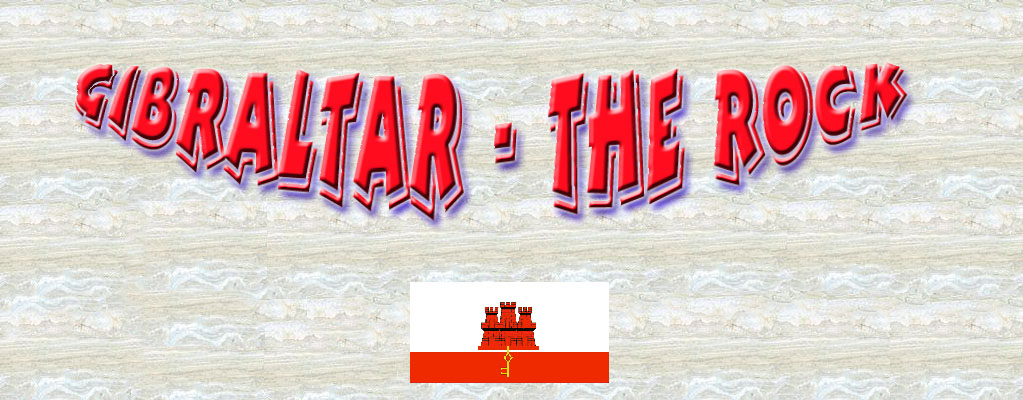The Phoenicians (c 950 BC) and the Carthaginians visited the area but did not settle on the Rock. The word "Calpe", Gibraltar's first known name, is of Phoenician origin and is possibly derived from the verb 'kalph', to hollow out - maybe a reference to St. Michael's Cave. Another name associated with the area is "the Pillars of Hercules". The Greek philosopher, Plato, mentions the Pillars of Hercules with reference to Calpe (Gibraltar) and Mons Abyla (Jebel Musa), the two mountains which dominate the Strait.
The decline of the Roman Empire around 400 AD led to invasions by the barbarians races of the east. Through Iberia (Spain) swept the Vandals and then the Goths. The former moved on into North Africa, but the latter occupied the Iberian peninsula from 414 to 711 AD.
Since the death of the prophet Muhammad at Medina in 632, the progress of the Arab armies of Islam was rapid, and by the beginning of the eighth century they were ready to embark upon the conquest of Spain. In 711, Tarik-ibn-Zeyad, a Berber, landed at the southern end of the Rock. His memory lives on to this day in the name "Gibraltar", which is a corruption of the Arabic words "Gibel Tarik" (Tarik's mountain).
In 1160 Abdul Memen, caliph of Morocco founded the city on the Rock, with its fortress, its walls, its mosques and water channels. The new city was designed as a strong fortress to protect the transport of everything necessary from Africa to start fighting against the Christians.
In 1309 Gibraltar was captured by Spanish troops of Ferdinando IV but in 1333 the city fell back into Muslim hands. The Tower of Homage of the Moorish castle was built several years later.
In 1462 the Duke of Medina Sidonia finally conquered Gibraltar, and in 1502 the Catholic Kings incorporated it to the Kingdom of Castille.
After the start of the Spanish Succession War, on the 2nd of August 1704 the Anglo-Dutch army under the command of admiral Rocke captured Gibraltar. Utrecht Treaty in 1713 confirmed the cession of Gibraltar and of the island of Minorca to Great Britain. Later attempts on the part of Spain to reclaim the fort were in vain. In 1726 the first siege took place, and between 1779-1783, the so-called Great Siege. With North American Independence War (1778), Spain , an ally of France, offered its neutrality to Great Britain in exchange for the cession of Gibraltar, which Great Britain refused.
The Great Siege started on the 21st June 1779, and Spanish forces than had up to 33 000 soldiers facing a garrison of 7 000 men that had taken refuge on the Rock. The siege lasted more than three years during which the Rock remained cut off, and the garrison was saved from starvation thanks to three reliefs of the Royal Navy. Finally the United States gained their independence and peace was established. With the Treaty of Versailles Minorca was given back to Spain and Great Britain was confirmed in its possession of Gibraltar. The reconstruction of the city, which was completely destroyed by the large siege, started.
Later on, in 1830 Gibraltar was declared a colony. The XIX century was a very prosperous period for Gibraltar. During the war against Napoleon it became important commercial center for the Royal Navy battle cruises and for the English corsairs taking the boats they captured from the enemy to sell them as a loot. During the First World War, Gibraltar served as a support base for the supplies to British troops. Its military strategic significance was confirmed during the Second World War as the bridgehead for the allies in the Mediterranean. For that very reason, the North American squad that later on disembarked in North Africa, gathered in its port. Spain tried to reclaim the Rock many times closing the border between 1969 and 1985 as a kind of economic blockade.
The Parliament of Gibraltar is made up of 18 deputies, 15 of them elected by popular vote. The Governor is appointed by the British government and has the supreme responsibility of the government and welfare of the enclave.
 Palms 120,39 KB |
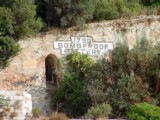 Old battery 164,20 KB |
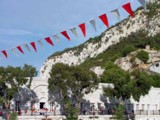 Piazza 124,72 KB |
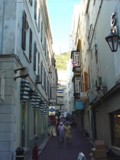 Narrow street 85,20 KB |
 Gibraltar.jpg 60,16 KB |
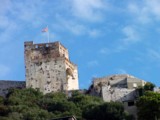 Moorish Castle 64,21 KB |
 Cannon 66,48 KB |
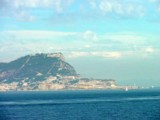 Rock_2.jpg 56,22 KB |
Photos by Zbig Kurzawa-2002
Gibraltar is a part of our Polish history because of the famous and never solved mystery of an airplane crash with Polish Prime Minister onboard. General Wladyslaw Sikorski was born in Tuszow Narodowy, Poland on 20 May 1881. He became a general and held off a Russian invasion of Warsaw in 1920. After the German invasion in 1939 he fled to Paris where he established the Polish government-in-exile where he served as both Commander-in-Chief and Prime Minister. Throughout World War II he tried to organize the Polish Army and constantly negotiated with Churchill and Roosvelt to circumvent any appeasement deals between the Allies, Russia, and Germany which would come at Poland's expense. On 4 July 1943
, General Sikorski was killed along with his only daughter in a suspicious plane crash at Gibraltar.
Gibraltar is widely known as a duty free zone so many Spaniards and other tourists go there for cheaper whisky, brandy and vodka as well as for digital cameras and other electronic devices. Local currency is Gibraltar's pound but you can pay using euro, dollars or credit cards as well.
Books about the Rock worth reading
1/ "Gibraltar"-M.Harvey, J.Chapple, Spellmount Publishers June 2002.
This volume is a comprehensive, heavily illustrated history of Gibraltar from prehistoric times to present day, including a visitors' guide to exploring the island. Gibraltar includes an in-depth account of the successive occupations of Gibraltar by the Moors, Spain, and Great Britain. It also details the development of Gibraltar as a military fortress and the sixteen sieges it has suffered in seven hundred years as well as the social, economic, and political growth of Gibraltar into a self-governing colony.
2/ "RAF Gibraltar"- T.Fairbairn, Tempus Publishing 2002.
3/ "Accident.The Death of General Sikorski"- David Irving - first published by William Kimber and Co Ltd. 1967, free download to read by Acrobat Reader.
Interesting links
1/ Tourism and leisure
2/Goverment Official Site
3/ Gibraltar Magazine
Have a look at other Kurzawa homepages
